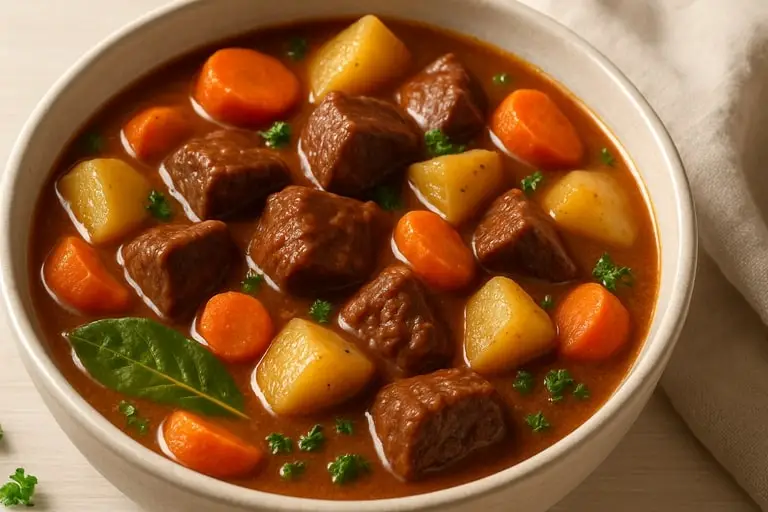Is pneumonia contagious is a frequent question in public health, especially during seasonal illness outbreaks and in healthcare settings. Pneumonia is an infection of the lungs that inflames the air sacs, often filling them with fluid or pus. It can be caused by bacteria, viruses, fungi, or other pathogens. Whether pneumonia is contagious depends on its cause, since not all forms spread in the same way. Understanding these distinctions is essential for preventing transmission, protecting vulnerable populations, and promoting early medical intervention.
Bacterial pneumonia, the most common type, can be contagious under certain circumstances. Streptococcus pneumoniae, Mycoplasma pneumoniae, and other bacteria responsible for pneumonia spread through respiratory droplets released when an infected person coughs or sneezes. Close contact, particularly in crowded or poorly ventilated environments, increases the risk. While not every exposure leads to illness, weakened immune systems, chronic illnesses, and advanced age raise susceptibility to bacterial transmission and subsequent lung infection.
Viral pneumonia, caused by influenza, respiratory syncytial virus (RSV), or coronaviruses, is typically more contagious than bacterial forms. These viruses spread through droplets, contaminated surfaces, and sometimes through aerosols in enclosed spaces. Viral infections may begin as colds or flu before progressing to pneumonia in vulnerable individuals. Because viruses spread more easily, public health strategies emphasize vaccination, hand hygiene, and respiratory etiquette to reduce outbreaks.
Fungal pneumonia, such as that caused by Histoplasma or Pneumocystis jirovecii, is generally not contagious in healthy individuals. These infections typically occur when spores from the environment are inhaled, often in regions with specific soil or bird droppings. People with compromised immune systems, such as those undergoing chemotherapy or living with HIV/AIDS, are more susceptible, but they do not transmit fungal pneumonia to others. This illustrates why the question of contagiousness depends on the underlying pathogen.
Hospital-acquired pneumonia represents a unique challenge. Patients in hospitals, particularly those on ventilators, may develop pneumonia due to resistant bacteria present in healthcare environments. While this form is not usually spread outside hospitals, it underscores the importance of infection control practices, such as hand hygiene, sterilization, and responsible antibiotic use. Preventing hospital-based transmission requires strict adherence to safety protocols.
Aspiration pneumonia, caused by inhaling food, liquid, or vomit into the lungs, is not contagious. It typically affects individuals with swallowing difficulties or impaired reflexes, such as stroke patients or those under sedation. Recognizing this type helps avoid unnecessary concerns about contagion and focuses care on managing swallowing safety and underlying conditions.
The contagiousness of pneumonia also depends on the host. Some individuals may carry bacteria or viruses in their upper respiratory tract without becoming ill, acting as asymptomatic carriers. They can spread pathogens to others, particularly in households, schools, and long-term care facilities. This silent transmission highlights why preventive measures are necessary even when people appear healthy.
Symptoms of pneumonia, such as fever, cough, chest pain, and shortness of breath, often resemble other respiratory infections, making it difficult to distinguish contagious cases without medical evaluation. Diagnostic tests such as chest X-rays, sputum cultures, and viral panels help confirm the type of pneumonia and determine whether isolation or specific precautions are necessary.
Prevention strategies depend on cause and risk factors. Vaccines against pneumococcal bacteria and influenza significantly reduce pneumonia cases and their contagious spread. Handwashing, mask use during respiratory illness, avoiding smoking, and maintaining good general health all contribute to lowering transmission. For immunocompromised individuals, minimizing exposure to crowded places and maintaining close contact with healthcare providers are essential.
Understanding whether pneumonia is contagious also helps reduce stigma. Not all patients with pneumonia pose a risk to others, and appropriate care and empathy are vital. Encouraging medical attention rather than isolation ensures early treatment and reduces complications. Clarifying misconceptions prevents unnecessary fear and promotes informed decision-making in communities.
Ultimately, pneumonia can be contagious depending on its cause, but not all forms spread from person to person. Differentiating between bacterial, viral, fungal, and aspiration pneumonia ensures accurate risk assessment and effective prevention. By recognizing symptoms early, practicing preventive care, and supporting those affected, communities can reduce transmission and improve outcomes for individuals at risk.
Is Pneumonia Contagious Transmission and Risk Factors
Pneumonia transmission occurs through multiple pathways, depending on the pathogen involved. Droplet transmission is the most common, occurring when infected individuals release respiratory particles through coughing, sneezing, or even talking. These droplets can settle on surfaces or enter the airways of others in close proximity. Transmission risk is highest in environments with poor ventilation, close contact, or insufficient hygiene practices. Understanding these mechanisms allows individuals and healthcare systems to implement effective preventive measures.
Indirect transmission is another factor in pneumonia spread. Pathogens can survive on surfaces for varying periods, with viruses often remaining viable longer than bacteria. Touching contaminated surfaces and then touching the face or mouth facilitates entry into the respiratory system. This is why hand hygiene and surface disinfection remain cornerstones of infection control in both community and healthcare settings.
Age is a significant risk factor in both transmission and severity. Infants, young children, and older adults have weaker or compromised immune systems, making them more likely to develop pneumonia after exposure. Children frequently transmit viral respiratory infections within schools and households, creating chains of contagion that extend to vulnerable grandparents or immunocompromised family members. In contrast, healthy adults may resist infection despite exposure, illustrating how susceptibility varies widely.
Underlying medical conditions also increase transmission risk. People with chronic lung disease, diabetes, heart disease, or weakened immune systems are more susceptible to pneumonia and more likely to develop severe complications. For these individuals, even minor exposures can lead to significant illness. Preventive care, including vaccinations and regular health monitoring, is therefore particularly important for at-risk populations.
Socioeconomic factors influence pneumonia transmission as well. Crowded living conditions, inadequate access to healthcare, and limited resources for hygiene create environments where contagious forms spread more easily. In developing regions, limited vaccination coverage further exacerbates outbreaks. Addressing these disparities through public health initiatives and global cooperation is crucial to reducing pneumonia’s global burden.
Healthcare environments are a double-edged sword in pneumonia transmission. While hospitals provide treatment, they also harbor resistant bacteria that can spread to vulnerable patients. Preventing hospital-acquired pneumonia requires strict infection control protocols, including isolation, handwashing, and judicious antibiotic use. Healthcare workers play a critical role in breaking the chain of transmission within medical facilities.
Pneumonia transmission also interacts with seasonal patterns. Viral pneumonias are more common in colder months, when people spend more time indoors and close contact increases. Dry winter air also impairs the respiratory system’s natural defenses, making infections more likely. Recognizing seasonal trends helps guide vaccination campaigns and public awareness efforts.
The use of antibiotics affects transmission dynamics. While antibiotics effectively treat bacterial pneumonia, misuse contributes to resistant strains that are harder to control. These resistant pathogens spread more easily within communities and healthcare facilities, complicating prevention and treatment. Responsible antibiotic use preserves effectiveness and reduces the risk of widespread resistant pneumonia.
Travel and global connectivity further influence pneumonia transmission. Infections can spread rapidly across borders as travelers carry pathogens between regions. Public health monitoring and global surveillance are essential to detect outbreaks early and prevent international spread. This interconnectedness underscores why pneumonia is not only an individual concern but a global health challenge.
Ultimately, pneumonia transmission depends on complex interactions between pathogens, hosts, and environments. Recognizing these factors empowers individuals and communities to take preventive steps, from vaccinations and hygiene practices to broader public health measures. While not every case of pneumonia is contagious, understanding transmission risks allows for better protection and healthier societies.
Is Pneumonia Symptoms and Prevention Strategies
Recognizing pneumonia symptoms early is essential for timely treatment and preventing contagious spread. Common symptoms include fever, chills, cough, chest pain, shortness of breath, and fatigue. Some patients experience sputum production, while others may have dry coughs. In older adults and young children, symptoms may present differently, with confusion, poor appetite, or lethargy often replacing classic signs. Because pneumonia symptoms overlap with colds, flu, and COVID-19, medical evaluation is necessary for accurate diagnosis.
The severity of pneumonia symptoms varies depending on the cause, overall health, and age of the patient. Mild cases may resemble bronchitis, while severe pneumonia can lead to hospitalization, oxygen therapy, or intensive care. Rapid breathing, low oxygen levels, and bluish skin tones signal urgent complications that require immediate medical attention. Recognizing these warning signs and acting quickly can save lives.
Prevention strategies begin with vaccination. The pneumococcal vaccine protects against the most common bacterial cause, while the annual influenza vaccine reduces risk of viral pneumonia. Vaccination is especially important for children, older adults, and those with chronic illnesses, as they face the highest risks. Expanding vaccine access worldwide remains a key public health goal to reduce pneumonia incidence.
Hand hygiene remains one of the simplest and most effective prevention strategies. Regular handwashing with soap and water, or using alcohol-based sanitizers, reduces transmission of viruses and bacteria that cause pneumonia. Coupled with respiratory etiquette such as covering coughs and wearing masks when ill, these measures significantly reduce community spread.
Healthy lifestyle choices also support prevention. Avoiding smoking preserves lung function, as tobacco damages the respiratory system and increases vulnerability to infection. Balanced nutrition, adequate hydration, and regular physical activity strengthen immune defenses, reducing both risk of infection and severity of symptoms. Managing chronic conditions like diabetes and asthma further lowers susceptibility.
Environmental strategies also play a role. Improving indoor air quality through ventilation, reducing exposure to pollutants, and maintaining clean environments all reduce respiratory irritation and infection risk. These measures are particularly important in urban areas with high air pollution and in healthcare settings where vulnerable individuals gather.
Early medical intervention remains critical for prevention of complications. Patients who recognize pneumonia symptoms and seek timely care often recover fully, while delays increase the risk of severe illness. Antibiotics, antivirals, and supportive care all improve outcomes when started promptly. Regular follow-up ensures complications are avoided and lung health is restored.
For individuals caring for pneumonia patients, infection control is vital. Limiting close contact, disinfecting frequently touched surfaces, and ensuring proper ventilation protect caregivers and other household members. Masks, gloves, and hand hygiene reduce exposure, especially when caring for immunocompromised patients. These precautions prevent secondary cases and reduce stress for families.
Public health measures such as community education campaigns, vaccination drives, and surveillance programs contribute to pneumonia prevention on a larger scale. Educating people about symptoms, when to seek care, and how to prevent spread empowers communities and reduces disease burden. Collaboration between healthcare providers, governments, and international organizations ensures that preventive strategies are effective and accessible.
Ultimately, pneumonia prevention combines individual responsibility with community and global action. By recognizing symptoms, practicing prevention, and supporting vulnerable populations, societies can reduce the impact of pneumonia. While not all forms are contagious, the principles of hygiene, vaccination, and timely care protect against both transmission and complications, improving health outcomes worldwide.
Respiratory health is central to overall wellbeing, yet infections affecting the lungs continue to be among the most serious public health concerns. Pneumonia, in particular, is an illness that has accompanied humanity for centuries, evolving in the ways it develops and spreads. Because it can affect people of all ages, from infants to the elderly, questions about its transmission, prevention, and severity are constant. When people ask is pneumonia contagious, they are essentially asking about how this complex disease spreads and what can be done to limit risk.
Pneumonia occurs when the tiny air sacs in the lungs, known as alveoli, fill with fluid or pus, making breathing difficult and limiting oxygen intake. This condition may be triggered by bacteria, viruses, or fungi, each with unique pathways of infection. While bacterial and viral pneumonia are most common, the causes differ in how contagious they are. Understanding the pathogen responsible is the first step in evaluating risk and answering whether pneumonia can be passed from one person to another.
Viral pneumonia often develops as a complication of respiratory viruses like influenza or respiratory syncytial virus. These viruses spread through airborne droplets when an infected person coughs or sneezes. Because of this, viral pneumonia is considered contagious, particularly in crowded settings. Bacterial pneumonia, caused by organisms like Streptococcus pneumoniae, can also spread between individuals, though direct person-to-person transmission is less common than with viral forms. Fungal pneumonia typically arises in immunocompromised individuals after exposure to spores in the environment and is generally not contagious.
Symptoms include coughing, fever, chills, chest pain, and difficulty breathing. In severe cases, lips or fingertips may turn bluish due to low oxygen levels. Children and older adults are especially vulnerable, as their immune defenses are weaker. Early recognition of symptoms is crucial for seeking treatment, which may involve antibiotics for bacterial infections or antiviral medications when appropriate. In every case, supportive care such as hydration, rest, and oxygen therapy plays a key role.
Prevention focuses on vaccines, hygiene, and strengthening immunity. The pneumococcal vaccine protects against several bacterial strains, while annual flu shots reduce the likelihood of viral infections leading to pneumonia. Handwashing, avoiding close contact with sick individuals, and maintaining strong overall health with good nutrition and sleep are practical steps anyone can take. These measures, while simple, are among the most effective tools for reducing transmission.
The contagiousness of pneumonia depends on both the cause and the health status of those exposed. People with weakened immune systems, chronic illnesses, or poor lung health are far more likely to contract infections after exposure. Conversely, those with strong immunity may fight off the same exposure without falling ill. This explains why some family members may become sick while others remain unaffected in the same environment.
Hospitals and nursing homes represent higher-risk settings due to the concentration of vulnerable individuals and frequent use of invasive devices like ventilators. Healthcare-associated pneumonia can spread rapidly if hygiene protocols are not maintained. For this reason, infection control measures such as mask usage, sterile equipment, and isolation protocols are vital. The same principles apply in households, where limiting close contact with infected individuals can reduce the spread.
While much focus is placed on transmission, recovery is equally important. Pneumonia can leave lasting effects on lung health, particularly in individuals with pre-existing conditions like asthma or COPD. Rehabilitation may involve breathing exercises, gradual physical activity, and long-term follow-up with healthcare providers. Public awareness about how pneumonia spreads is only part of the battle; supporting recovery is just as essential for reducing overall burden.
Global statistics highlight pneumonia as one of the leading infectious causes of death worldwide, particularly in children under five. In many developing regions, limited access to vaccines, antibiotics, and clean air makes transmission and severity worse. International health initiatives stress that education about pneumonia’s causes and prevention remains a top priority. By improving awareness, the question is pneumonia contagious becomes more than curiosity—it becomes a public health responsibility.
In conclusion, pneumonia is not a single disease but a spectrum of lung infections with different levels of contagiousness. Viral and bacterial forms may spread from person to person, while fungal versions generally do not. Risk factors, prevention strategies, and treatments all vary, but one truth remains constant: pneumonia can be serious, yet it is also preventable and treatable when approached with vigilance. The answer to whether pneumonia is contagious ultimately depends on the type, the individual, and the measures taken to protect health.
When people search for answers about respiratory illness, one of the most pressing concerns is the question: is pneumonia contagious? Because pneumonia represents a broad group of lung infections rather than a single disease, the answer requires detail. The phrase is pneumonia contagious continues to appear in healthcare discussions, online searches, and medical consultations, showing how common this uncertainty is. To answer properly, we must examine types of pneumonia, causes, prevention, and transmission in detail.
Medical experts emphasize that whether the phrase is pneumonia contagious applies depends largely on the source of infection. Viral pneumonia, often caused by influenza or RSV, spreads easily through coughing, sneezing, and contaminated surfaces. Thus, in this case, the answer to is pneumonia contagious is yes. Bacterial pneumonia can also spread between individuals, though not always with the same efficiency. By contrast, fungal pneumonia does not typically raise concerns under the question is pneumonia contagious, because it develops from environmental spores, not person-to-person contact.
People often wonder why some family members become sick while others remain healthy. The explanation ties back to the question is pneumonia contagious. Immunity, age, and pre-existing health conditions all shape outcomes. For vulnerable individuals, the answer to is pneumonia contagious is more critical, because exposure is more likely to result in illness. Stronger immune systems may resist the same pathogens without noticeable symptoms, making prevention a layered concept rather than a simple yes or no.
In hospitals, healthcare workers frequently discuss whether is pneumonia contagious. Medical staff emphasize protocols such as sterilization, mask use, and patient isolation to limit risks. In such environments, the importance of asking is pneumonia contagious becomes clear, since outbreaks among immunocompromised patients can be life-threatening. By applying infection control rigorously, the question of is pneumonia contagious is answered not only with science but also with practical prevention.
Children are another group where parents urgently ask is pneumonia contagious. Because younger immune systems are less mature, viral and bacterial forms spread more rapidly in classrooms and daycare centers. Pediatricians regularly educate families on vaccines and hygiene, reinforcing that the issue of is pneumonia contagious has special relevance in protecting children’s health. The same applies to elderly populations, who often experience more severe symptoms after exposure.
Public health campaigns often address the query is pneumonia contagious directly in their materials. Posters, online guides, and awareness programs explain that prevention is key. The pneumococcal vaccine, flu shots, and proper sanitation practices all reduce risks. By centering around the core question is pneumonia contagious, these campaigns simplify messaging for communities and emphasize collective responsibility.
For individuals, the answer to is pneumonia contagious affects personal behavior. Those experiencing cough, fever, and shortness of breath are advised to stay home, limit close contact, and seek treatment. By internalizing the idea that is pneumonia contagious, people make choices that protect loved ones and coworkers. Without such awareness, transmission continues unchecked, fueling outbreaks especially during winter.
Global data repeatedly illustrate why the phrase is pneumonia contagious deserves serious attention. In developing countries, lack of vaccines and crowded living conditions mean transmission is more severe. Governments and health organizations directly tackle the concern is pneumonia contagious by providing resources, improving healthcare infrastructure, and ensuring access to antibiotics. The phrase thus becomes central not only in individual lives but also in international health strategy.
Digital platforms also amplify the query is pneumonia contagious. Millions of people type the phrase into search engines every year, reflecting both fear and curiosity. Reliable health websites ensure that the phrase is pneumonia contagious leads to accurate content that dispels myths. By doing so, they transform a simple question into a tool for education, improving global health literacy.
Ultimately, the repeated concern is pneumonia contagious highlights the importance of clarity. The true answer depends on the type of pneumonia, the immune status of the individual, and the steps taken for prevention. For viral and bacterial forms, is pneumonia contagious is a valid concern requiring action. For fungal types, the answer is generally no. But in every case, raising the question is pneumonia contagious ensures awareness, vigilance, and proactive care.
The conclusion is clear: the more society engages with the question is pneumonia contagious, the more effectively pneumonia can be managed. By understanding that context matters—cause, setting, prevention—people are better equipped to protect themselves and others. Thus, answering is pneumonia contagious goes beyond a simple yes or no. It becomes a call to action, uniting science, medicine, and community responsibility in the fight against respiratory illness.













